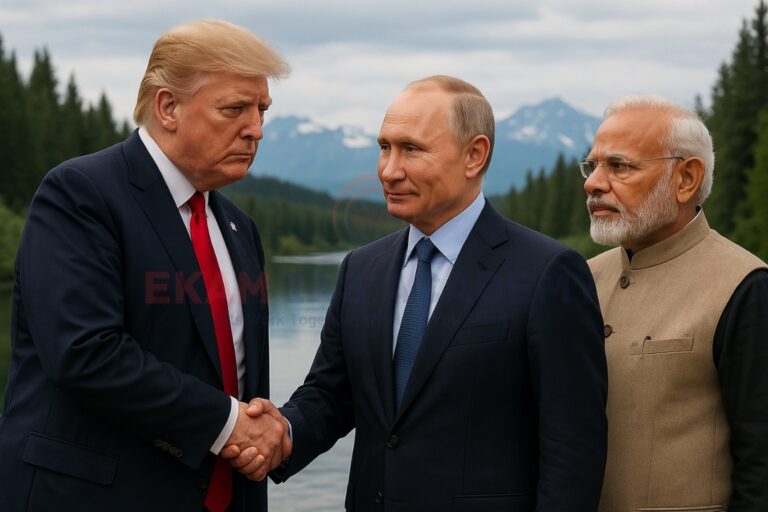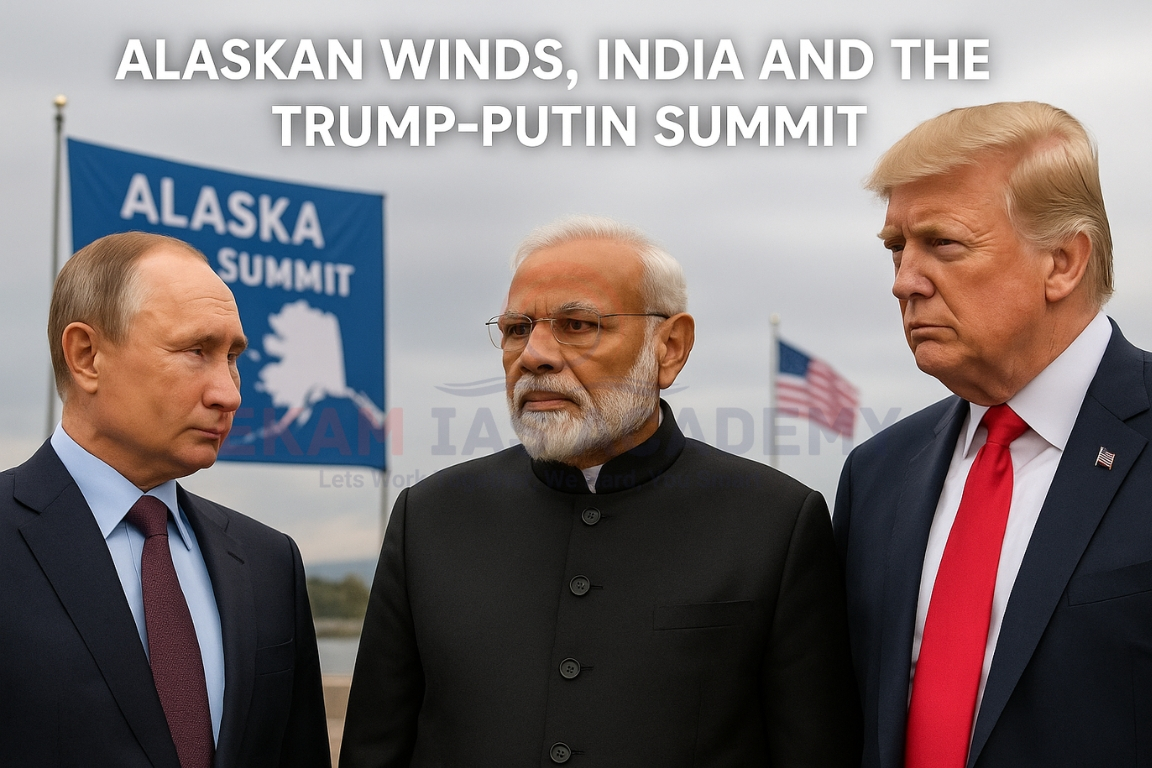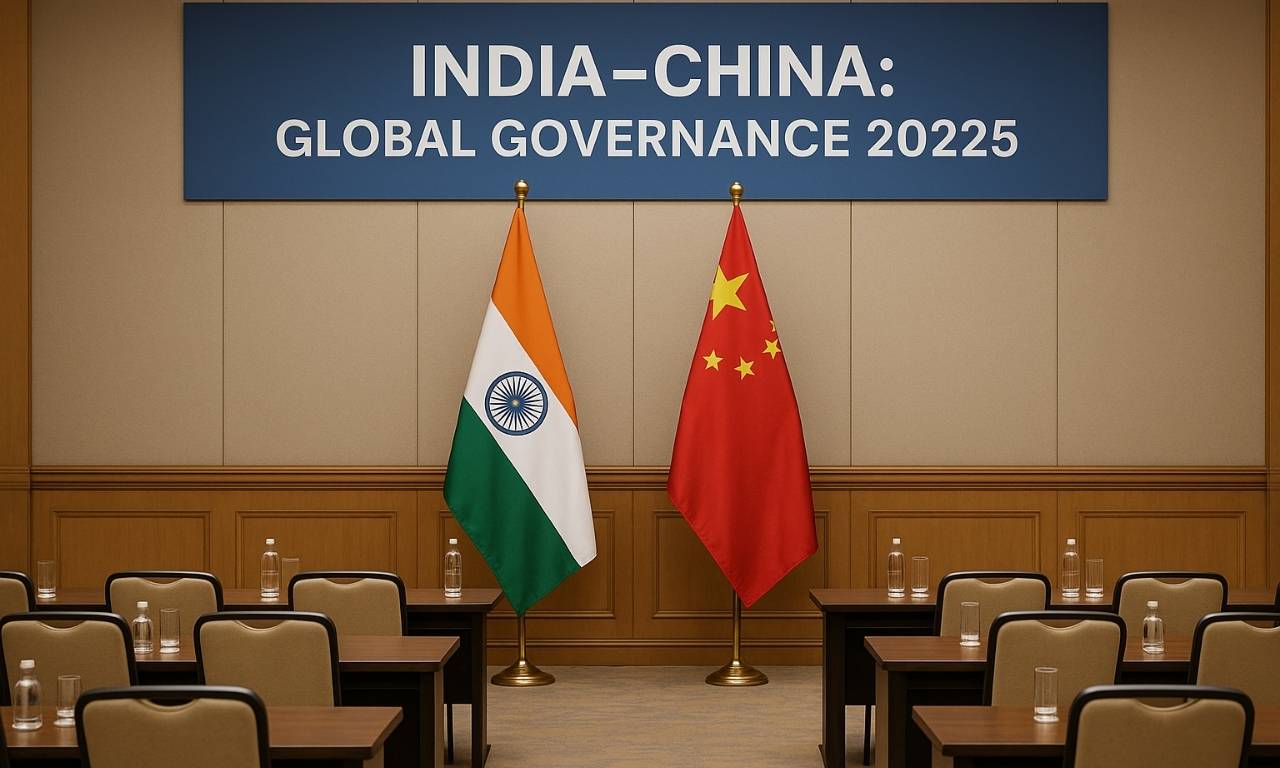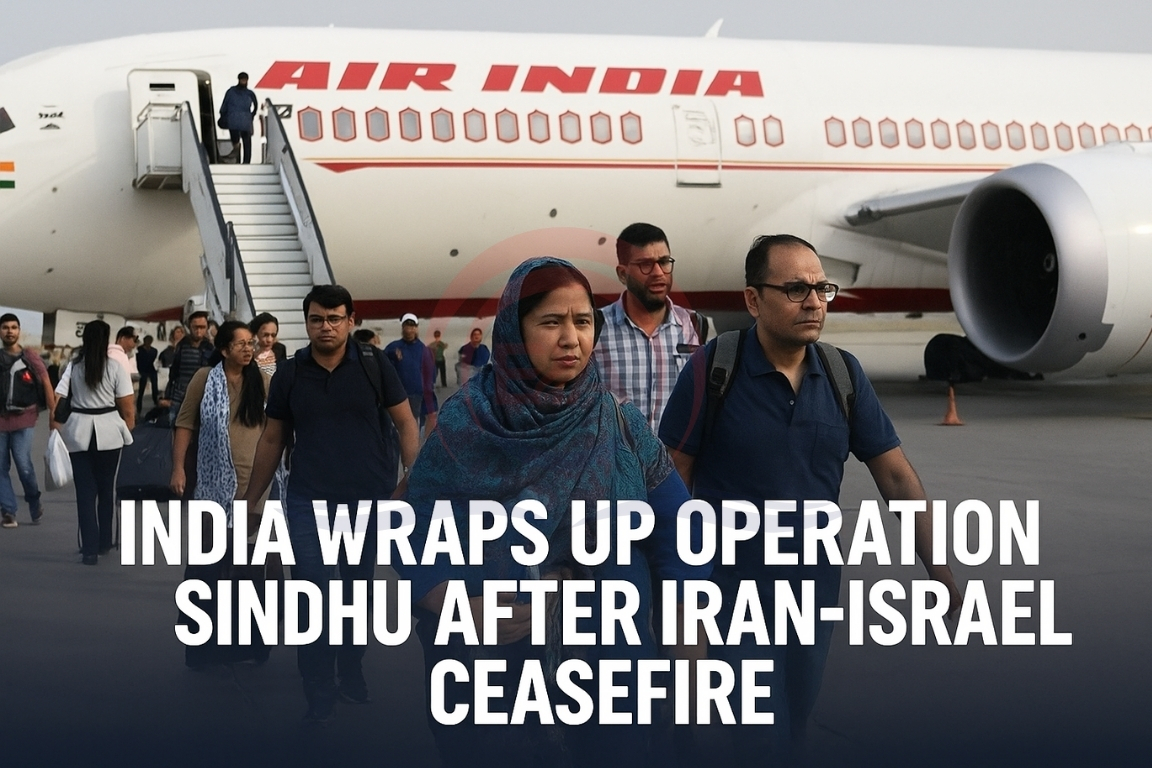The Trump-Putin “Alaska Summit” (August 15, 2025) was seen as a possible turning point in the Russia-Ukraine conflict. For India, however, the summit did not bring relief on sanctions, tariffs, or trade disputes with the U.S., raising questions over its diplomatic space and strategy.
Background
- India has been balancing its ties with both the U.S. and Russia.
- New Delhi expected that U.S.-Russia rapprochement would ease pressure on India over its Russian oil imports and trade issues.
- Instead, U.S. policies towards India remained tough, with no rollback of sanctions or tariffs.
Key Takeaways for India
No Policy Shift towards India
- Despite the friendly Trump-Putin meeting, no softening of U.S. stance on India was visible.
- U.S. secondary sanctions on Indian oil imports from Russia remain in place.
- U.S. trade talks with India continue to be stalled; reciprocal tariffs are still effective.

Operation Sindoor Dispute
- The U.S. version of Operation Sindoor (May 2025) differs from India’s account.
- Mr. Trump claimed credit for mediating the India-Pakistan ceasefire, contradicting India’s narrative.
- This has created tension as the Modi government is reluctant to accept U.S. claims.
Summitry vs. Substance
- India’s foreign policy in recent years has relied heavily on leader-to-leader chemistry.
- But outcomes of personal diplomacy have been limited — e.g., Modi-Xi meetings did not prevent the 2020 border clashes.
- With the U.S., high-profile rallies (Howdy Modi, Namaste Trump) also failed to ensure sustained understanding.
- Lesson: Focus must shift from optics to concrete agreements.
Need for Political Balance
- India’s close association with particular leaders (e.g., Trump in 2020, Biden later) has created friction.
- Maintaining bipartisan ties in the U.S. is crucial to avoid instability whenever power shifts.
- Similar lessons apply in South Asia (Bangladesh, Sri Lanka, Maldives).
Strategic Autonomy in Energy
- U.S. penalties on Indian oil imports highlight the risks of bowing to unilateral sanctions.
- India had earlier cut Iranian and Venezuelan oil imports under U.S. pressure, hurting its own interests.
- Upholding the principle of only following UN-approved sanctions strengthens India’s credibility, especially in the Global South.
India’s Way Forward
- New Delhi should:
- Diversify trade partners (Japan, China, SCO, G-20 platforms).
- Take a firmer stance against unfair U.S. tariffs and restrictions.
- Rebuild India’s agency in foreign policy by prioritizing national interest over external pressure.
HISTORY OF ALASKA’S SUCCESSION BETWEEN RUSSIA AND USA
- Russian Rule (1740s–1867): Russia controlled Alaska after explorers and fur traders settled there in the 18th century, using it mainly for fur trade.
- Sale to the USA (1867): Russia sold Alaska to the United States for $7.2 million, as it was difficult for Russia to defend and manage the distant territory.
- US Territory to Statehood (1867–1959): Alaska was governed as a U.S. territory and later became the 49th state of the USA in 1959.
Conclusion
The Alaska Summit showed that U.S.-Russia warmth does not guarantee relief for India. New Delhi must reduce reliance on personal diplomacy, safeguard strategic autonomy, and build balanced, issue-based relations to secure its long-term interests.





